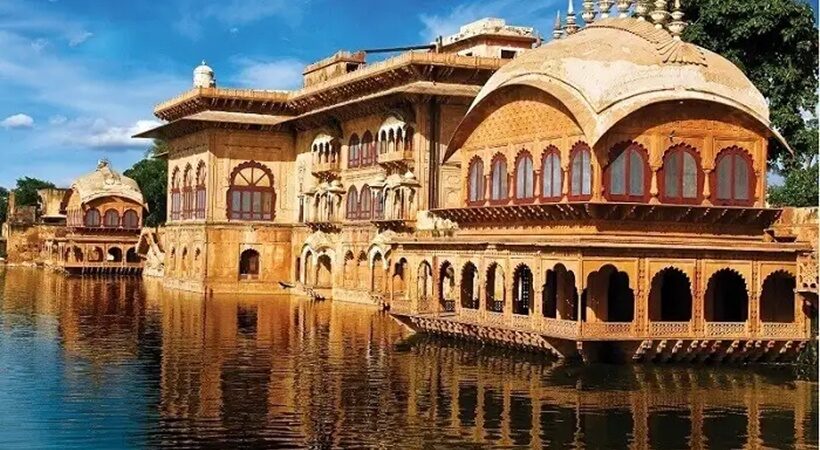With the erosion of Mughal authority in northern India, regional and ethnic centres of power sprang up and established their own kingdoms. One such kingdom with many legends of bravery and military might was the Jat Kingdom in eastern Rajasthan. Deeg Fort which encompasses the famous Deeg Palace was built by Maharaja Suraj Mal in 1730. Deeg Palace was built as a summer mansion and was heavily inspired by Mughal architecture.
Due to the immense threat of the Mughals, Maharaja Suraj Mal built a large quadrangle shaped fortress around Deeg Palace to protect it from the invaders. In the declining years of the Mughals, the Jats who were primarily agriculturists living in the area bordering Jaipur revolted against the Mughals. During this period, Badan Singh fought his way to establish power at Deeg in 1722 CE and became the first Thakur of Deeg. Badan Singh is known as a warrior who aligned this state with various powers such as the Maharajas of Jaipur, the Nizam of Hyderabad and others, to build his kingdom. It was his son, Raja Suraj Mal (1707- 1763) who expanded the Jat kingdom to its greatest heights.
The architecture of the place is a perfect combination of Mughal and Rajasthani art. Suraj Mal was so impressed by the Mughal architectural style that his fascination towards the same can easily be seen in the fortification of Deeg Palace. There is a garden in the fort yard of the palace which resembles that of the Charbagh, the Mughal Garden. Built in a square shape, the Deeg Palace is adorned with nine hundred fountains. The Deeg palace complex is flanked on two sides by large water tanks, Gopal Sagar and Rup Sagar. The palaces, gardens and pavilions are in the centre. The most striking building in the complex is the palace called Gopal Bhawan and two pavilions, Sawan and Bhadon, after the two months of monsoon.
One of the prominent features of the palace is the demarcation of space by various “Bhawans” or mansions. The plan of the palace complex is thus organized by various Bhawans such as Gopal Bhawan, Suraj Bhawan, Kishan Bhawan, Nand Bhawan, Keshav Bhawan and Hardev Bhawan. Keshav Bhawan is the monsoon pavilion that is next to the Rup Sagar lake. The walls of the tank are pierced with several water jets. During Holi, pouches with colours were inserted into the piercings of the reservoir wall. The water, which flowed through them via a network of pipelines, sprouted coloured water through the jets producing a multicolour fountain.
At Deeg, the visitor will also find some of the pieces that were taken from Mughal palaces. An ornate marble swing originally belonging to Mughal Emperor Jehangir was brought as a war trophy from Agra by Raja Suraj Mal. Many of the marble fountains and tanks were dug out from Agra Fort by Raja Jawahar Singh. In 1764, he also brought in a black marble throne, believed to have belonged to Emperor Akbar or Jehangir, as a war booty from Delhi, which can be seen today in front of Gopal Bhawan.
Today, the government of Rajasthan organizes a two-day Braj Holi Festival every year at the palace, where all the fountains are turned on. The spray of water from the fountains and the jets creates a monsoon-like ambience, which is enhanced further by sound effects of thunder around the pavilion.



















